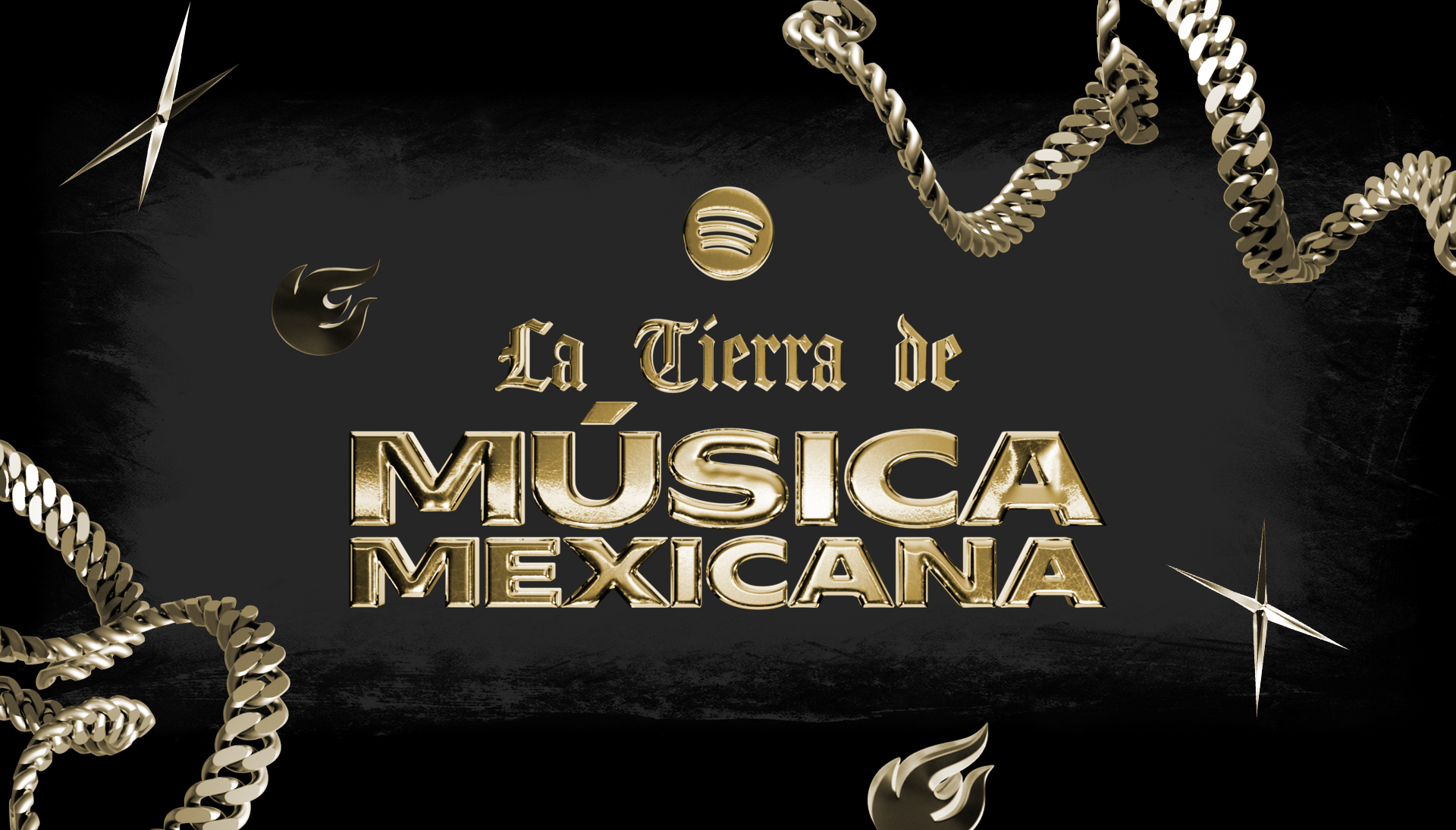
Across generations and borders, Música Mexicana continues to reach new fans. On Spotify, the genre has experienced unprecedented growth, with global streams up more than 440% since 2018. Several Música Mexicana subgenres are also on the rise as new waves of artists put their stamps on long-established musical traditions.
Last month, we celebrated “La Tierra de Música Mexicana” with a series of Spotify Singles showcasing three of today’s hottest subgenres: electro corridos, norteño sax, and sad sierreño. This week, we’re thrilled to bring the campaign to life for fans, artists, and industry leaders with a three-day affair in Los Angeles to celebrate all that falls under the Música Mexicana umbrella.
Over the first two days, the event will offer panels, masterclasses, and showcases tailored to emerging artists and industry professionals. On the third and final day, “La Tierra de Música Mexicana” will take over Avalon Hollywood with a packed lineup of performances from some of the genre’s most exciting artists.
Wednesday, September 11
We’ll kick things off with a Spotify for Artists masterclass focused on the tools and resources available to our creator community. Next, our Editorial team will host a Playlists, Curation, and Algorithms panel exploring our playlist ecosystem and how we represent Música Mexicana culture across Spotify. Our experts will then be available to answer specific questions during a “breakout tables” segment.
From there, our Songwriter and Publisher Partnerships team will explore the business side of Música Mexicana, with a focus on empowering and educating the new generation of songwriters and producers. Attendees will also be treated to a sit-down interview with Miguel Armenta, the songwriter behind “TQM” by Fuerza Regida, as we take a deep dive through the hit songs he’s helped create via his Written By playlist.
Night one will close out with our Mujeres en Música Mexicana panel and showcase featuring women artists and industry professionals from across the genre, including Chiquis, Erika Vidrio, and Designo Celestial.
Thursday, September 12
On day two, we’ll host a live show and Q&A with the hosts of the Agushto Papa podcast and special guests Oscar Ortiz and Alex Favela, who will delve into the trends and artistry shaping the genre.
Up next: presentations on strategic partnerships and music sales promotion. We’ll discuss how artists combine Spotify tools with their own marketing strategies to build successful album release cycles, followed by how to leverage tools like Showcase and Marquee to promote new music to your most likely listeners.
We’ll also hear from leading Música Mexicana experts on the evolution of the genre, as well as changes within the industry itself. Last but not least, the day will conclude with performances from Oscar Ortiz, Clave Especial, Octavio Cuadras, Adriana Ríos, and Adrian L Santos.
Friday, September 13
To close out “La Tierra de Música Mexicana,” Spotify is extending a special invite to our Música Mexicana Top Fans in Los Angeles for an evening of unmissable performances. Both established and emerging artists will take the stage, including Gabito Ballesteros, DannyLux, Oscar Maydon, Los Primos del Este, Alex Favela, Estevie, and Ivonne Galaz.
“Música Mexicana means so much to me because it truly changed my life,” says DannyLux. “From growing up listening to it with my family to being able to perform it onstage is something I’ll always be grateful for. I love how much people have embraced it in the past few years, and it’s cool to see it being mixed with different genres along the way. It’s a very collaborative genre and I think that’s why it lends itself to growth, because all the artists are willing to make magic together.”
Stream our Los Que Mandan playlist to hear the next generation of hitmakers, then head to our La Tierra de Música Mexicana hub to explore the genre in all its glory.


















Recent Comments